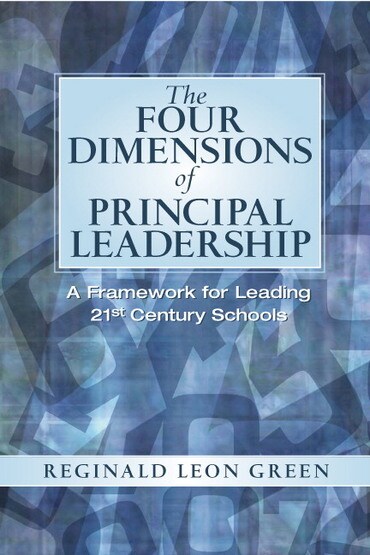
Four Dimensions of Principal Leadership, The: A Framework for Leading 21st Century Schools, 1st edition
Published by Pearson (July 14, 2017) © 2018
- Reginald Leon Green
Access details
- Instant access once purchased
- Fulfilled by VitalSource
- 180-day rental
Features
- Add notes and highlights
- Search by keyword or page
Access details
- Instant access once purchased
- Fulfilled by VitalSource
- 180-day rental
Features
- Add notes and highlights
- Search by keyword or page
Table of contents
CONTENTS Page
Preface i
Introduction Viii
Part I Establishing a Foundation for Leadership in Schools 1Chapter 1: Preparing Leaders for Twenty First Century Schools 1
Introduction 1
Twenty-First Century School Leadership Defined 3
Standards, Competencies, and Accountability Measures 6
The Competencies 12
Styles of Leadership for 21st Century Schools 15
Accountability Measures 22
Making the Connection: The Remaining Chapters 24
Implications for Leadership 27
Reflective Practice 29
Chapter Essentials 30
References 31
Part II Dimension 1: Understanding Self and Others 34
Chapter 2: Leading with an Understanding of Self 35
Introduction 35
The Value of Understanding Self 38
Observing the Effects of Leader Behavior 44
Scenario: The Leader Behavior of Principal Carter 45
Processes for Acquiring an Understanding of Self 53
Outcomes from Acquiring an Understanding of Self 62
Implications for Leadership 63
Reflective Practice 64
Chapter Essentials 65
References 66
Chapter 3: Leading With an Understanding of Others 69
Introduction 69
Developing an Understanding of Others 70
The Benefits of Understanding Others 78
Implications for Leadership 85
Reflective Practice 87
Chapter Essentials 88
References 89
Part III Dimension 2: Understanding the Complexity of Organizational Life 91
Chapter 4: The Social Interaction in Schools 92
Introduction 92
Organizations Defined 93
Scenario: Harpo Allen Middle School 94 Elements Contributing to the complexity of Organizational Life 97
Implications for Leadership 116
Reflective Practice 117
Chapter Essentials 118
References 119
Chapter 5: Perspective on School Structure: Chaos or Efficiency 121
Introduction 121
Organizational Structure Defined 122
The Different Types of Structure 124
Elements of Organizational Structure 84
Two Models of Structure Impacting Schools 89
The Mechanistic Bureaucratic Model 125
The Organic Humanistic Model 131
Structural Configurations for the Twenty-First Century Schoolhouse 133
Scenario: Superintendent Chooses First Year Principal to
Lead Fresh Start School 138
Implications for Leadership 151
Reflective Practice 152
Chapter Essentials 153
References 154
Chapter 6: The Principal’s Role in Establishing and Retaining aQuality Teaching Faculty 158
Introduction 158
Teacher Recruitment, Selection, Induction, and Placement 159
Instructional Supervision 165
A Mentoring Program for Teachers 170
Professional Development and Career Advancement 174
Implications for Leadership 178
Reflective Practice 179
Chapter Essentials 180
References 181
Part IV Dimension 3: Building Bridges through Relationships 184
Chapter 7: Developing Relationships for Effective Leadership in Schools 185
Introduction 185
Relationships Defined 187
The Importance of Establishing Positive Relationships in Schools 188
Types of Relationships Needed to Foster Goal Attainment 190
Approaches to Building Effective School Relationships 198
Benefits Derived from Establishing Effective Relationships 207
Implications for Leadership 210
Reflective Practice 211 Chapter Essentials 212 References 213
Part V Dimension 4: Engaging in Leadership Best Practices 216
Chapter 8: Utilizing Leadership Practices for Educational Renewal 217
Introduction 217
Understanding Best Practice 218
The Thirteen Core Competencies and Related Best Practices 220
Putting Best Practices into Action 245
Implications for Leadership 245 Reflective Practice 247 Chapter Essentials 248 References 249
Chapter 9: Putting Instructional Leadership into Practice 253
Introduction 253
Setting the Stage for Change 254
Creating and Communication the Vision 256
Identification of the Discrepancy 260
Selecting the Program Strategy 261
Assessing the School’s Capacity for Change 263
Building the Capacity for Change 265
Implementing the Identified Change 268
The Evaluation Phase 271
Implications for Leadership 274
Reflective Practice 276
Chapter Essentials 277 References 278
